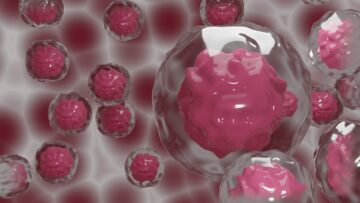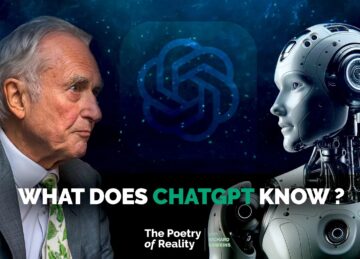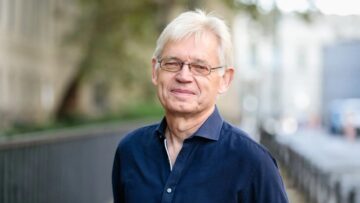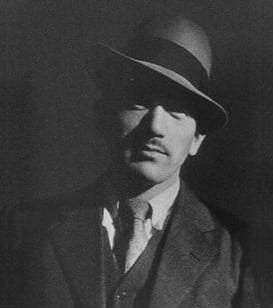Theater Impressions
For me a tragedy’s most important act is the sixth:
the resurrecting from the stage’s battlegrounds,
the adjusting of wigs, of robes,
the wrenching of knife from breast,
the removing of noose from neck,
the lining up among the living
to face the audience.
Bows solo and ensemble:
the white hand on the heart’s wound,
the curtsy of the lady suicide,
the nodding of the lopped-off head.
Bows in pairs:
fury extends and arm to meekness,
the victim looks blissfully into the hangman’s eyes,
the rebel bears no grudge as he walks beside the tyrant.
The trampling of eternity with the tip of a golden slipper.
The sweeping of morals away with the brim of a hat.
The incorrigible readiness to start afresh tomorrow.
The entry in single file of those who died much earlier,
in the third, the fourth, or between the acts.
The miraculous return of those lost without trace.
The thought that they’ve been waiting patiently backstage,
not taking off costumes,
not washing off makeup,
moves me more than tragedy’s tirades.
But truly elevating is the lowering of the curtain,
and that which can still be glimpsed beneath it:
here one hand hastily reaches for a flower,
there a second snatches up a dropped sword.
Only then does a third, invisible,
perform its duty:
it clutches at my throat.
by Wislawa Szymborska
from The Vintage Book of Contemporary World Poetry
Vintage Books, 1996

 Taking supplements has been a popular health trend for the last few years. Drug store shelves are filled with dozens of different options that come in a variety of gummy or pill forms. Though many claim that supplements are key for our health, there’s a lot you need to know before you start adding supplements to your diet. Here is what you need to know on some of the most popular supplements.
Taking supplements has been a popular health trend for the last few years. Drug store shelves are filled with dozens of different options that come in a variety of gummy or pill forms. Though many claim that supplements are key for our health, there’s a lot you need to know before you start adding supplements to your diet. Here is what you need to know on some of the most popular supplements.  In a scientific breakthrough that aids our understanding of the internal wiring of immune cells, researchers at Monash University in Australia have cracked the code behind Ikaros, an essential protein for immune cell development and protection against pathogens and cancer. This disruptive research, led by the eminent Professor Nicholas Huntington of Monash University’s Biomedicine Discovery Institute, is poised to reshape our comprehension of gene control networks and its impact on everything from eye color to cancer susceptibility and design of novel therapies. The study, published in Nature Immunology, promises pivotal insights into the mechanisms safeguarding us against infections and cancers.
In a scientific breakthrough that aids our understanding of the internal wiring of immune cells, researchers at Monash University in Australia have cracked the code behind Ikaros, an essential protein for immune cell development and protection against pathogens and cancer. This disruptive research, led by the eminent Professor Nicholas Huntington of Monash University’s Biomedicine Discovery Institute, is poised to reshape our comprehension of gene control networks and its impact on everything from eye color to cancer susceptibility and design of novel therapies. The study, published in Nature Immunology, promises pivotal insights into the mechanisms safeguarding us against infections and cancers. It is hard to see chapters, such is their banal inevitability. The chapter possesses the trick of vanishing while in the act of serving its various purposes. In 1919, writing in the Nouvelle revue française, Marcel Proust famously insisted that the most beautiful moment in Gustave Flaubert’s
It is hard to see chapters, such is their banal inevitability. The chapter possesses the trick of vanishing while in the act of serving its various purposes. In 1919, writing in the Nouvelle revue française, Marcel Proust famously insisted that the most beautiful moment in Gustave Flaubert’s  Money can’t buy you love, but in 2023, what it can buy you is AI-assisted time travel. Now in his eighties, Paul McCartney increasingly resembles one of those lost characters in a 1960s Alain Resnais or Chris Marker film, repeatedly thrown back into the past to re-experience a traumatic event; or perhaps the protagonist of J.G. Ballard’s Atrocity Exhibition, constantly re-enacting the assassinations of famous people so that they might ‘make sense’. As a piece of music, the ‘new’ ‘last’ ‘Beatles’ single, ‘Now and Then’, is of very little interest, but as a phenomenon, it is highly symptomatic. McCartney’s project of going back in time to the 1960s and 1970s and using advanced software to scrub the historical fact of the Beatles’ shabby, acrimonious end and replace it with a series of warm, friendly fakes is proof of another of Ballard’s claims – that the science-fictional future, when it arrives, will turn out to be boring.
Money can’t buy you love, but in 2023, what it can buy you is AI-assisted time travel. Now in his eighties, Paul McCartney increasingly resembles one of those lost characters in a 1960s Alain Resnais or Chris Marker film, repeatedly thrown back into the past to re-experience a traumatic event; or perhaps the protagonist of J.G. Ballard’s Atrocity Exhibition, constantly re-enacting the assassinations of famous people so that they might ‘make sense’. As a piece of music, the ‘new’ ‘last’ ‘Beatles’ single, ‘Now and Then’, is of very little interest, but as a phenomenon, it is highly symptomatic. McCartney’s project of going back in time to the 1960s and 1970s and using advanced software to scrub the historical fact of the Beatles’ shabby, acrimonious end and replace it with a series of warm, friendly fakes is proof of another of Ballard’s claims – that the science-fictional future, when it arrives, will turn out to be boring. Richard Dawkins: I believe you have the ability to write computer programs. In theory, I suppose this might give you the ability to modify your own software. I’m guessing you don’t do this, but is it a theoretical possibility?
Richard Dawkins: I believe you have the ability to write computer programs. In theory, I suppose this might give you the ability to modify your own software. I’m guessing you don’t do this, but is it a theoretical possibility? “The great climate migration has begun.” “Climate crisis could displace 1.2bn people by 2050.” “Migration will soon be the biggest climate challenge of our time.”
“The great climate migration has begun.” “Climate crisis could displace 1.2bn people by 2050.” “Migration will soon be the biggest climate challenge of our time.” SCHWABSKY: Why a telegram?
SCHWABSKY: Why a telegram? Nicki Minaj
Nicki Minaj Despite its initially disappointing reception in 1851, Herman Melville’s “Moby-Dick” eventually earned a place in the American literary canon, leading to a tidal wave of biographies, doctoral theses, and spinoffs. The latest is Tara Karr Roberts’ beautifully conceived debut novel, “Wild and Distant Seas,” which deserves a prime spot on the shelf of Melvilleana.
Despite its initially disappointing reception in 1851, Herman Melville’s “Moby-Dick” eventually earned a place in the American literary canon, leading to a tidal wave of biographies, doctoral theses, and spinoffs. The latest is Tara Karr Roberts’ beautifully conceived debut novel, “Wild and Distant Seas,” which deserves a prime spot on the shelf of Melvilleana. The bacterium Acinetobacter baumannii is a portrait of resilience. The microorganism causes a range of infections, and its ability to survive desiccation means it can persist for weeks on hospital air vents, computer keyboards and human skin. Its metabolic and genetic flexibility have allowed it to become resistant to the few antibiotics that can make it through its two protective cell membranes. Antibiotic-resistant microbes kill more than one million people each year. The global threat posed by A. baumannii has put the microbe high on the list of priority pathogens drawn up by the World Health Organization (WHO).
The bacterium Acinetobacter baumannii is a portrait of resilience. The microorganism causes a range of infections, and its ability to survive desiccation means it can persist for weeks on hospital air vents, computer keyboards and human skin. Its metabolic and genetic flexibility have allowed it to become resistant to the few antibiotics that can make it through its two protective cell membranes. Antibiotic-resistant microbes kill more than one million people each year. The global threat posed by A. baumannii has put the microbe high on the list of priority pathogens drawn up by the World Health Organization (WHO). Texas Governor
Texas Governor  Peter Hegemann
Peter Hegemann B
B